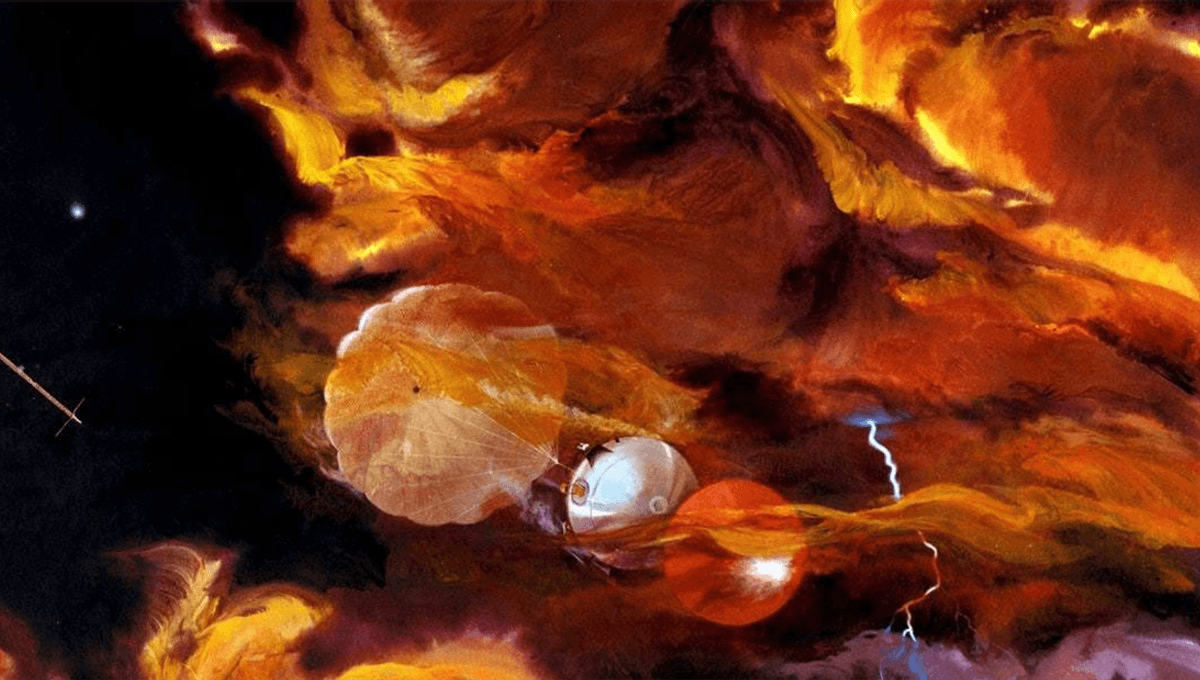-
Web sayfası bildirimcisi
- EXPLORE
-
Sayfalar
-
Blogs
-
Forums
What NASA's Galileo Spacecraft Saw As It Plunged Into Jupiter

What NASA's Galileo Spacecraft Saw As It Plunged Into Jupiter
Though our telescopes have become pretty darn good over the last century, there's nothing quite like seeing a planet from the point of view of an approaching spaceship.
In 1979, 1980, and 1981, humanity got our first brief glimpses of Jupiter from close up, as Pioneer 10, Pioneer 11, Voyager 1, and Voyager 2 flew past the gas giant. While the glimpses of the planet were tantalizing, in October 1989, NASA launched the Galileo probe, the first spaceship with a dedicated mission to study Jupiter. On its way to Jupiter, the probe gained a gravity assist from Venus, sending back stunning photos of its clouds. Photos of Venus and its clouds taken during Galileo flyby. Image credit: NASA/JPL When it arrived at the gas giant in 1995, Galileo became the first spacecraft to orbit an outer planet. There, it began its primary task of studying Jupiter, its magnetosphere, and moons. "The primary mission included a 23-month, 11-orbit tour of the Jovian system, including 10 close encounters of Jupiter's major moons," NASA explains. "Although the primary mission was completed in December 1997, the mission was extended three times. Galileo had 35 encounters of Jupiter's major moons – 11 with Europa, eight with Callisto, eight with Ganymede, seven with Io and one with Amalthea." The probe sent back the first detailed images and observations of the planet's moons, finding evidence of intense volcanic activity on Io, signs of a liquid ocean underneath Europa, and the magnetic field around Ganymede. Europa imaged by Galileo. Image credit: NASA/JPL-Caltech/SETI Institute As well as the planned aspects of the mission, the spacecraft became the first (and only) spacecraft to witness a comet hitting the planet, as Comet Shoemaker-Levy 9 impacted Jupiter's far side. One of the most exciting parts of the mission came at the start, as Galileo dropped a descent probe into the planet's atmosphere in July 1995. The descent probe did not have its own fuel supply, and began a free fall into the planet. "Eight minutes later, the orbiter started receiving data from the descent probe, which slammed into the top of the Jovian atmosphere at a comet-like speed of 170,000 kilometers per hour (106,000 miles per hour). In the process, the probe withstood temperatures twice as hot as the Sun's surface," NASA explains, adding that the probe slowed itself through aerodynamic braking before deploying a parachute and heat shield. "The wok-shaped probe floated down about 200 kilometers (125 miles) through the clouds, transmitting data to the orbiter on sunlight and heat flux, pressure, temperature, winds, lightning and atmospheric composition. Fifty-eight minutes into its descent, high temperatures silenced the probe's transmitters. The probe sent data from a depth with a pressure 23 times that of the average on Earth's surface, more than twice the mission requirement." Though the probe stopped sending back data just under an hour after it was deployed, it measured atmospheric elements within the planet, giving us data on how Jupiter's chemical abundances differ from those in the Sun, and clues on how the planet evolved in the early Solar System. Galileo itself was not spared from a final, dramatic plunge into Jupiter. Thanks to data from the spacecraft, we learned that there was potentially salt water underneath the surface of the icy moon Europa. On September 21, 2003, NASA deliberately plunged the spacecraft into Jupiter in order to protect Europa from a potential impact with the probe. "Its entry point into the giant planet’s atmosphere was about 1/4 degree south of Jupiter's equator. If there were observers floating along at the cloud tops, they would see Galileo streaming in from a point about 22 degrees above the local horizon," NASA explains. "Streaming in could also be described as screaming in, as the speed of the craft relative to those observers would be 48.2 kilometers per second (nearly 108,000 miles per hour). That is the equivalent of traveling from Los Angeles to New York City in 82 seconds."



